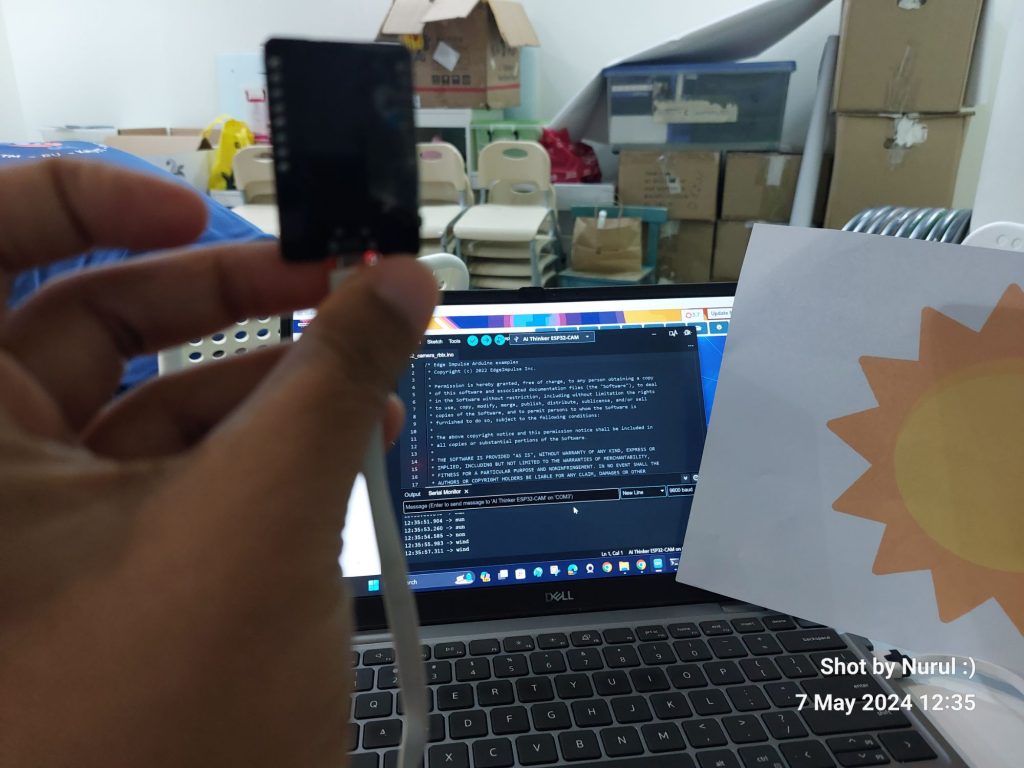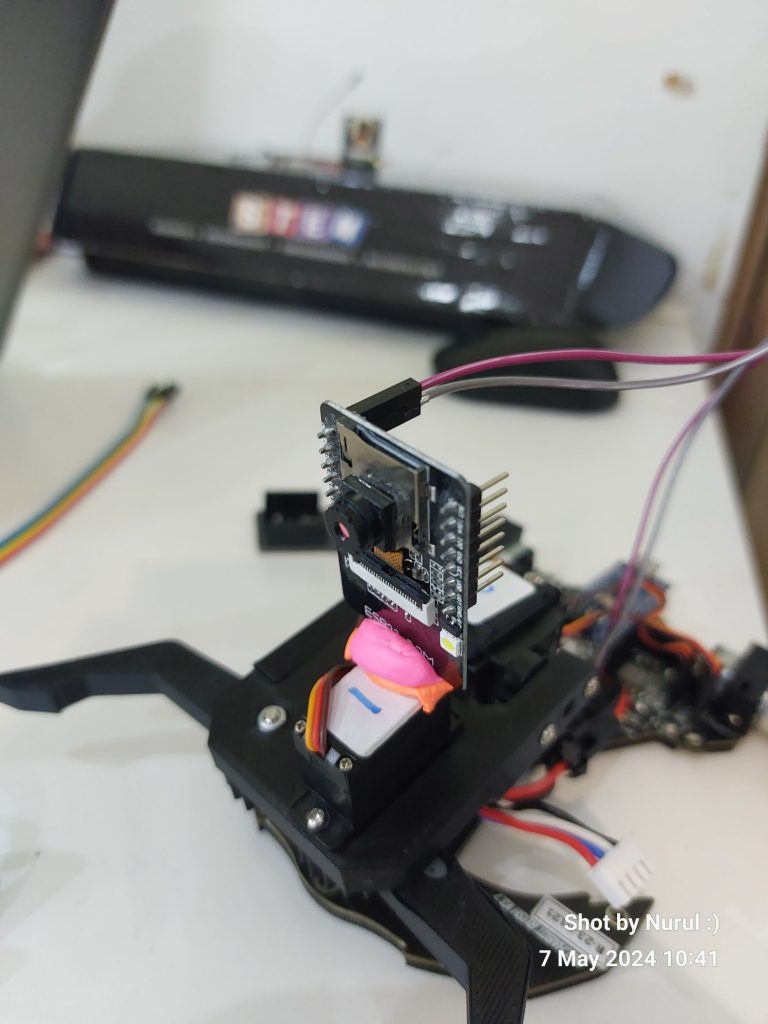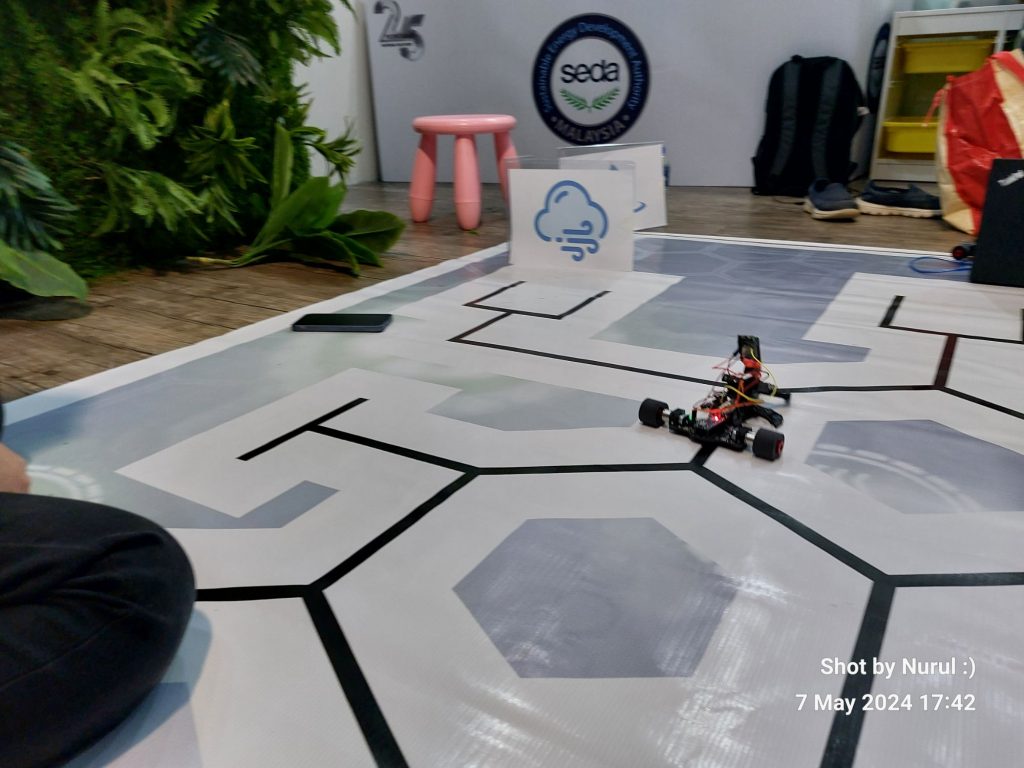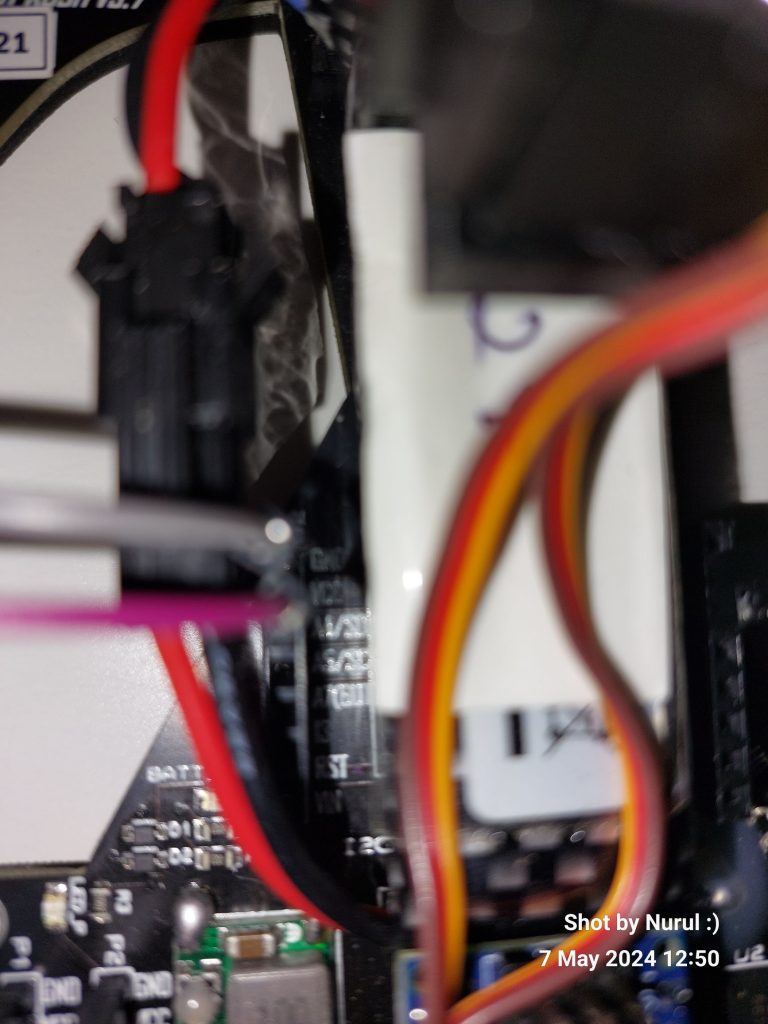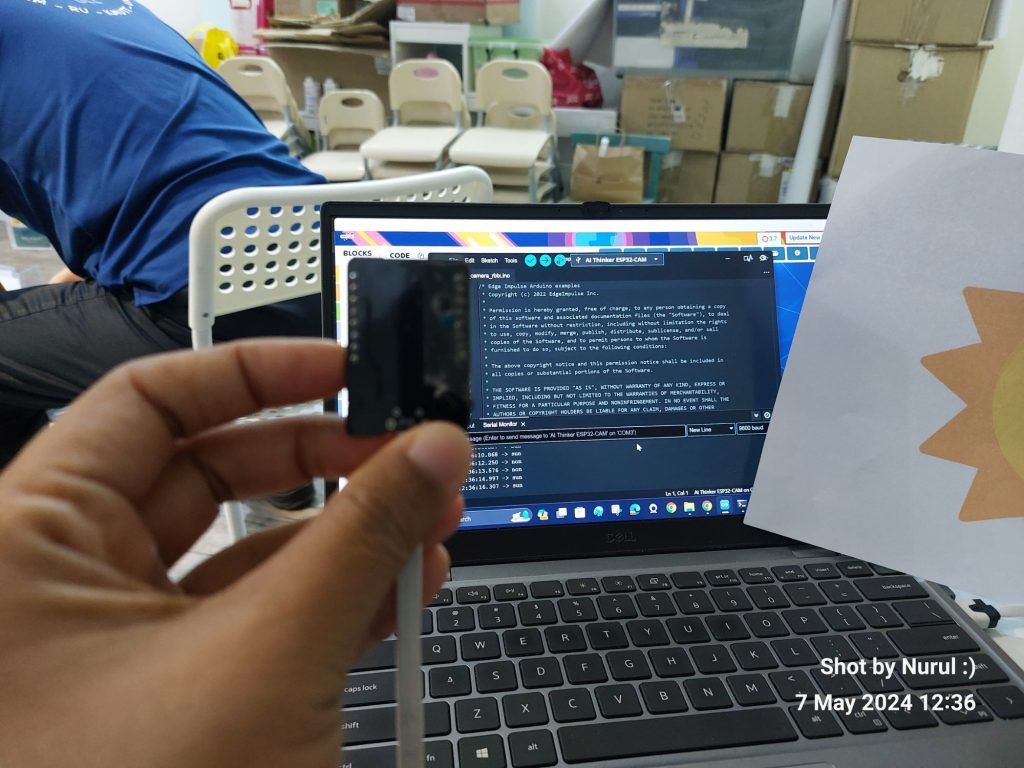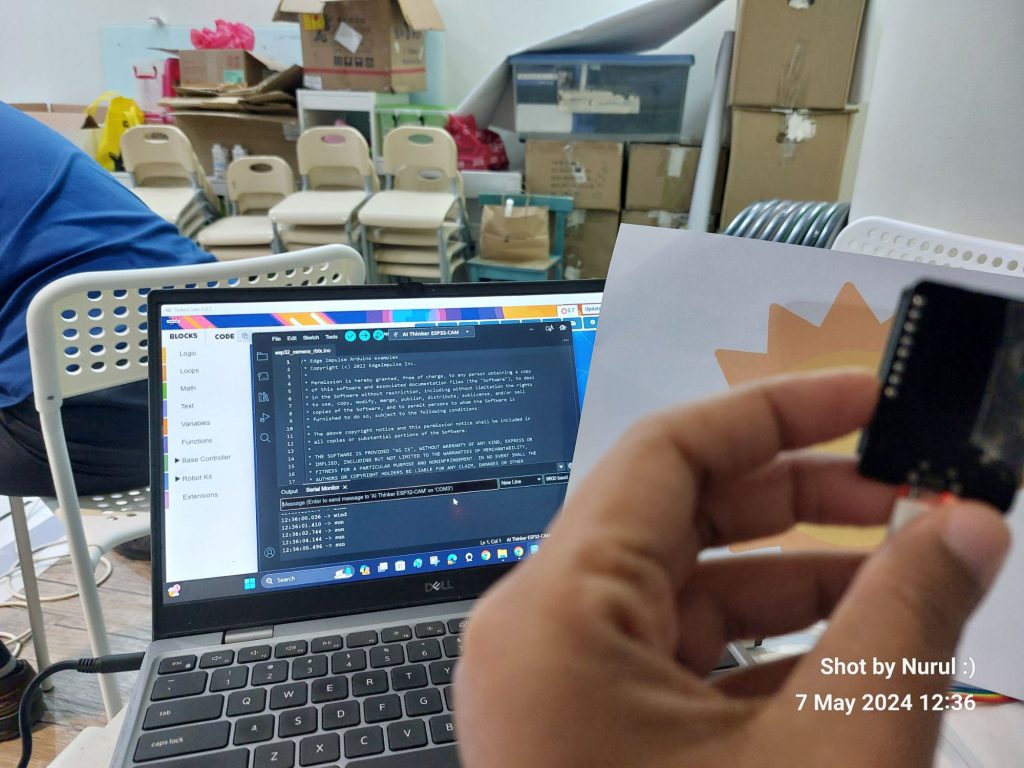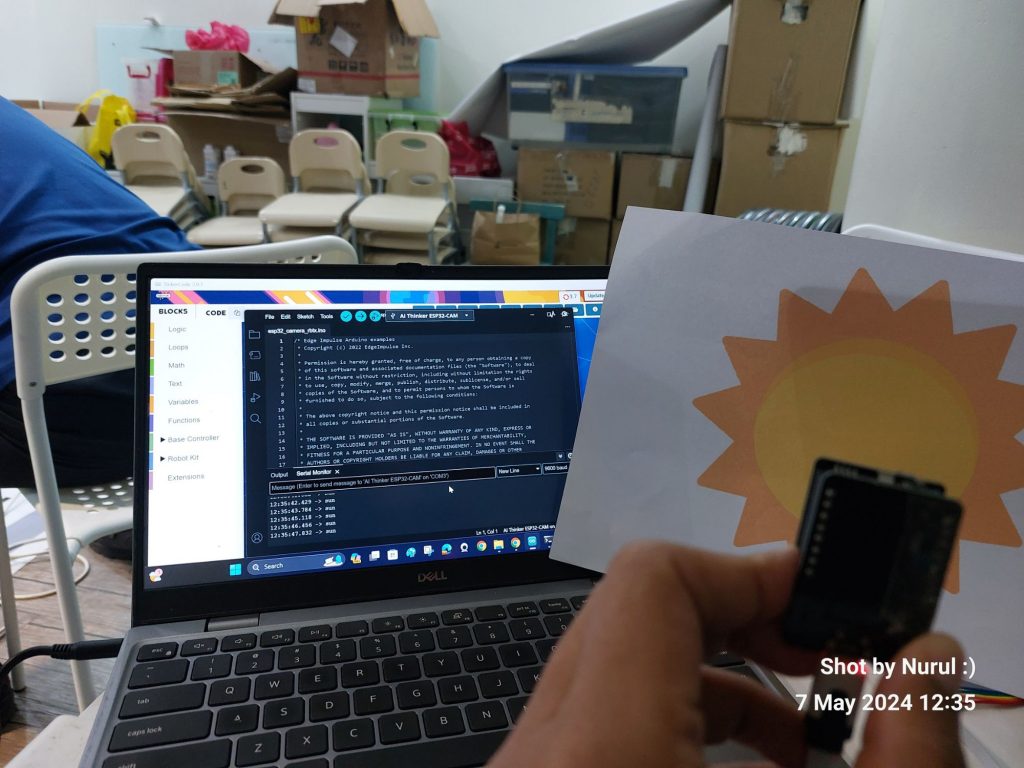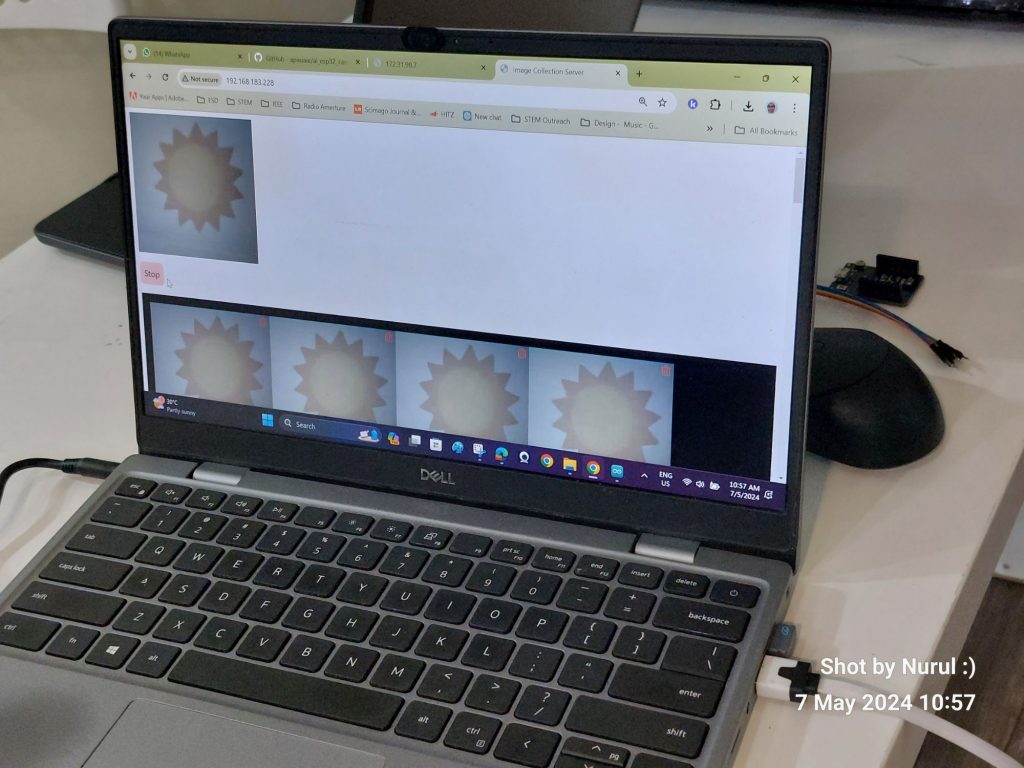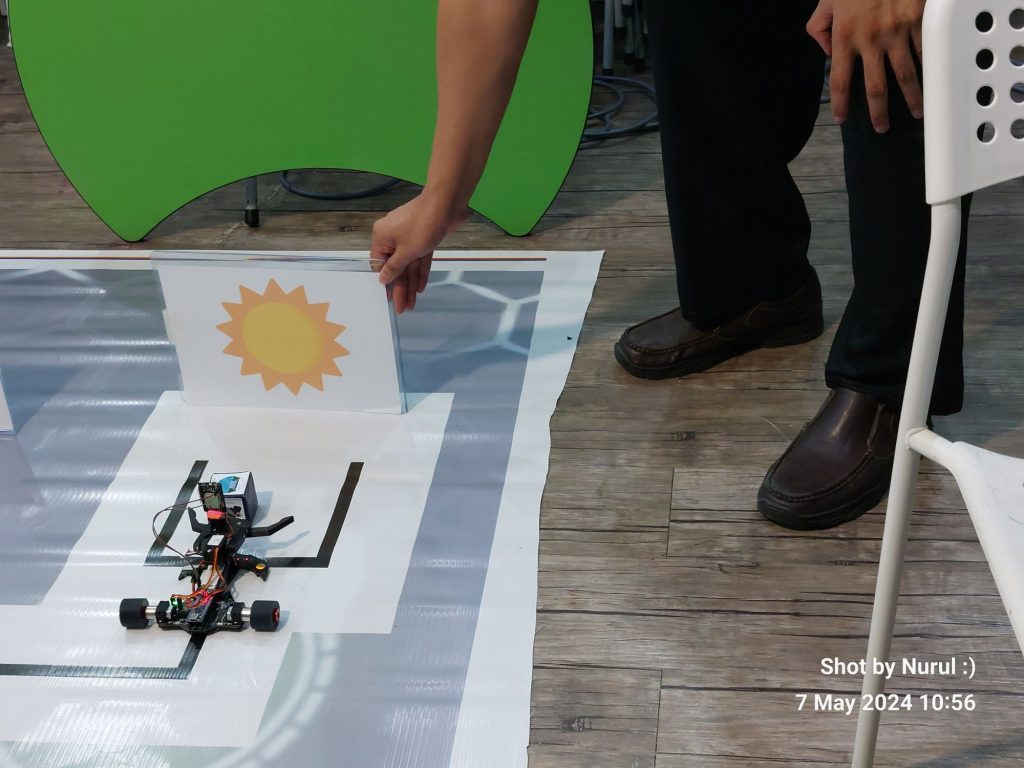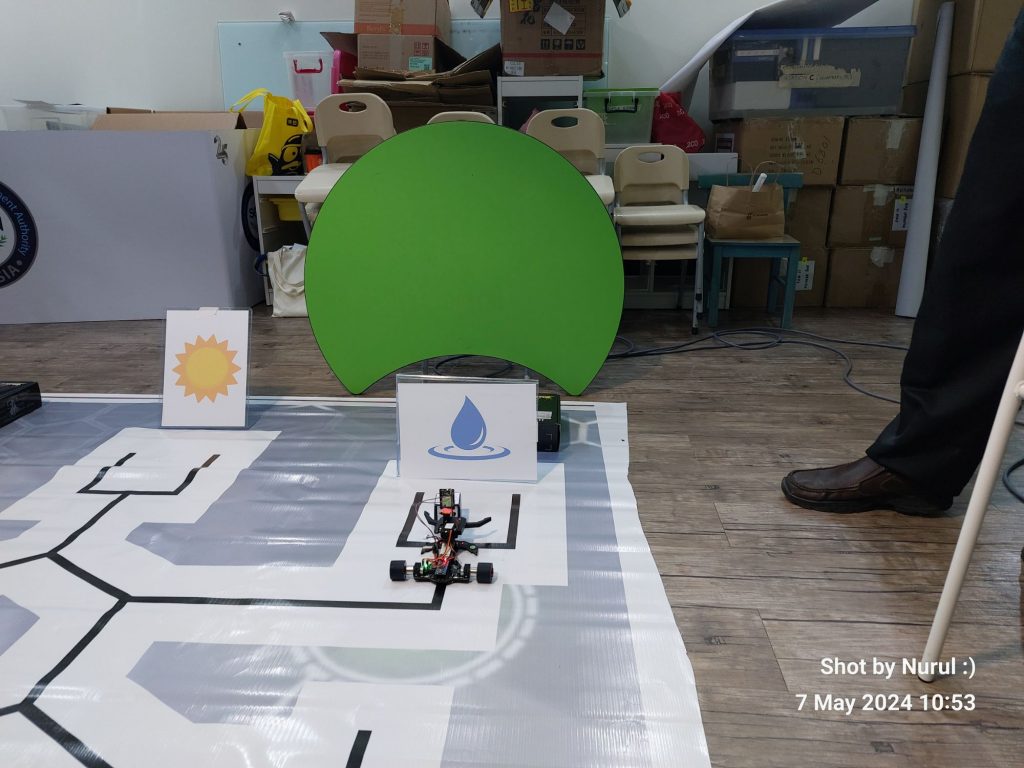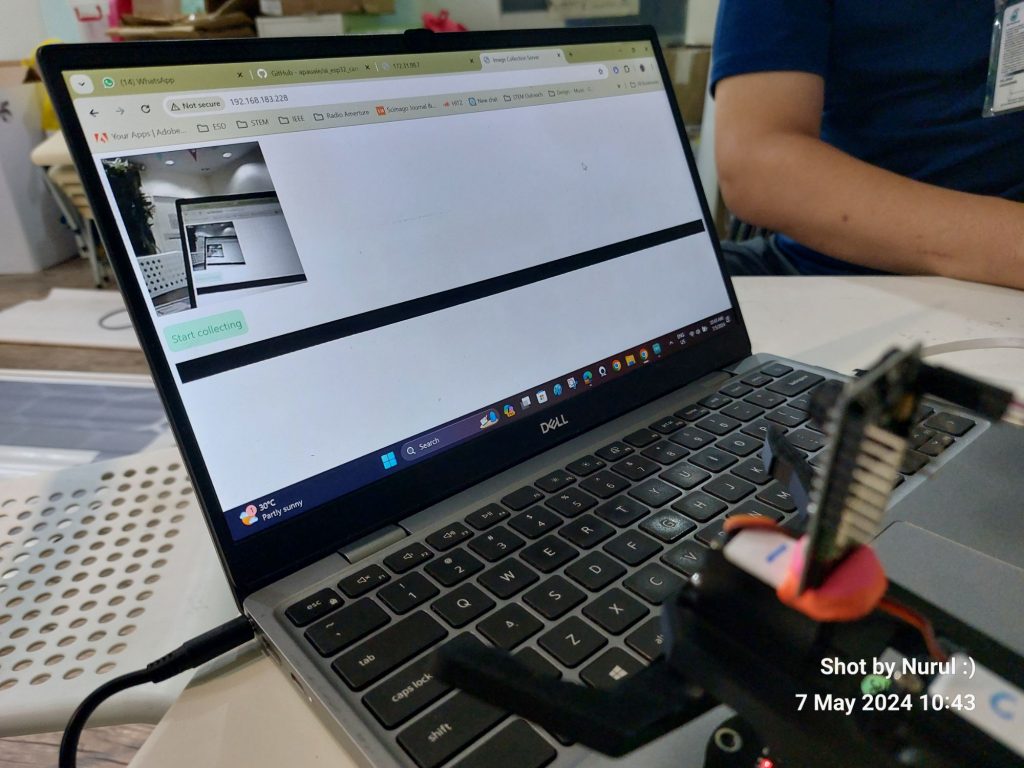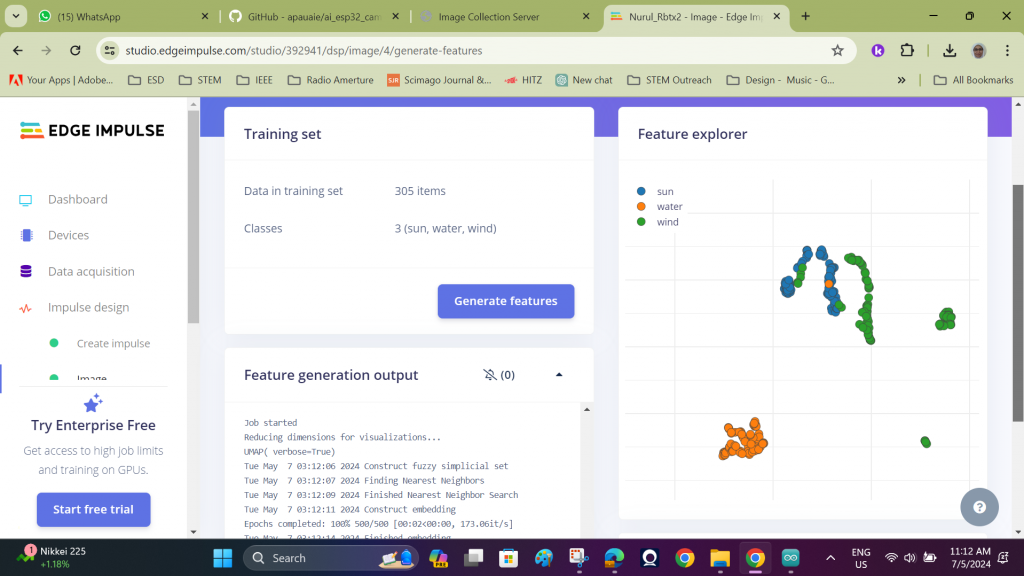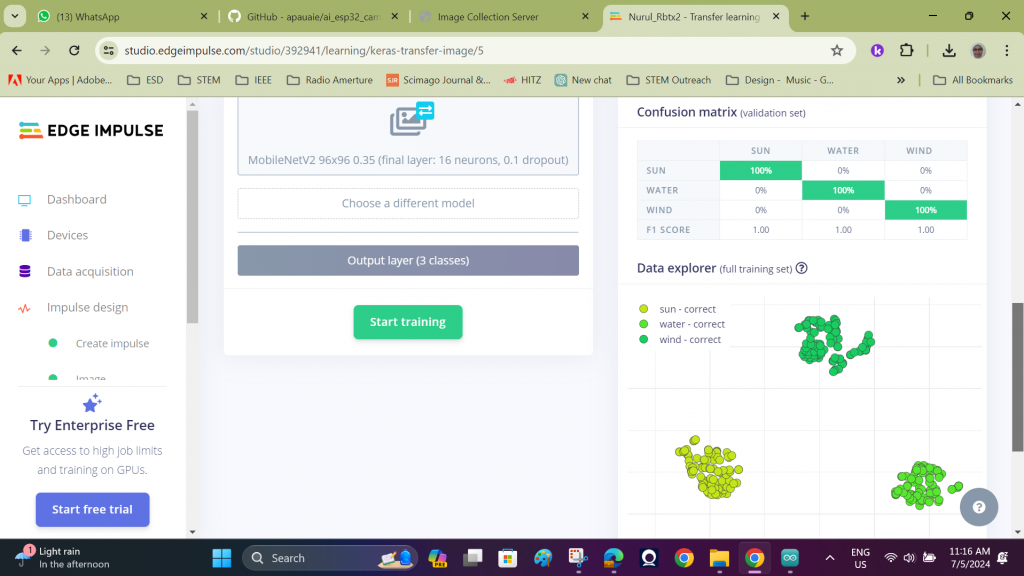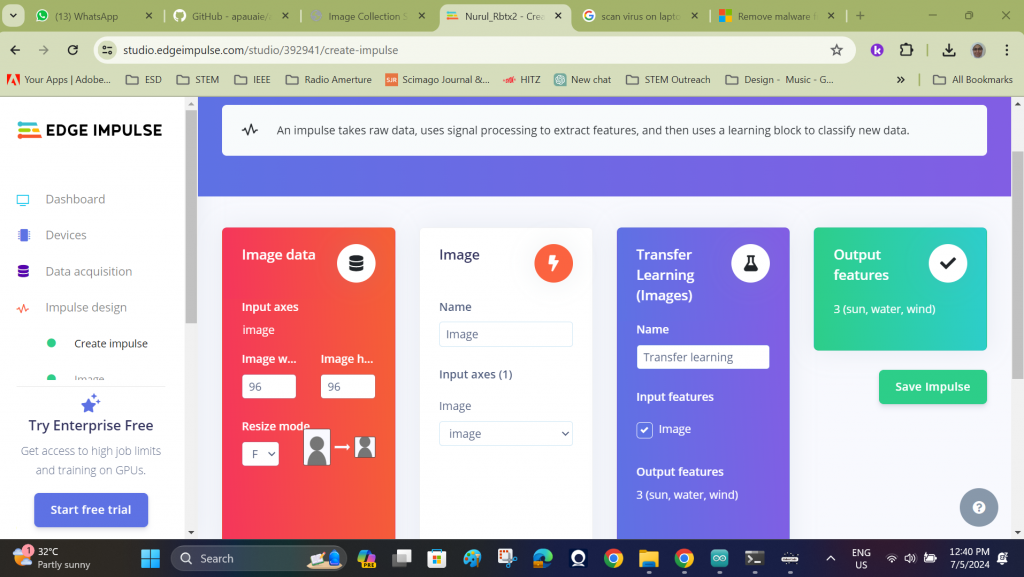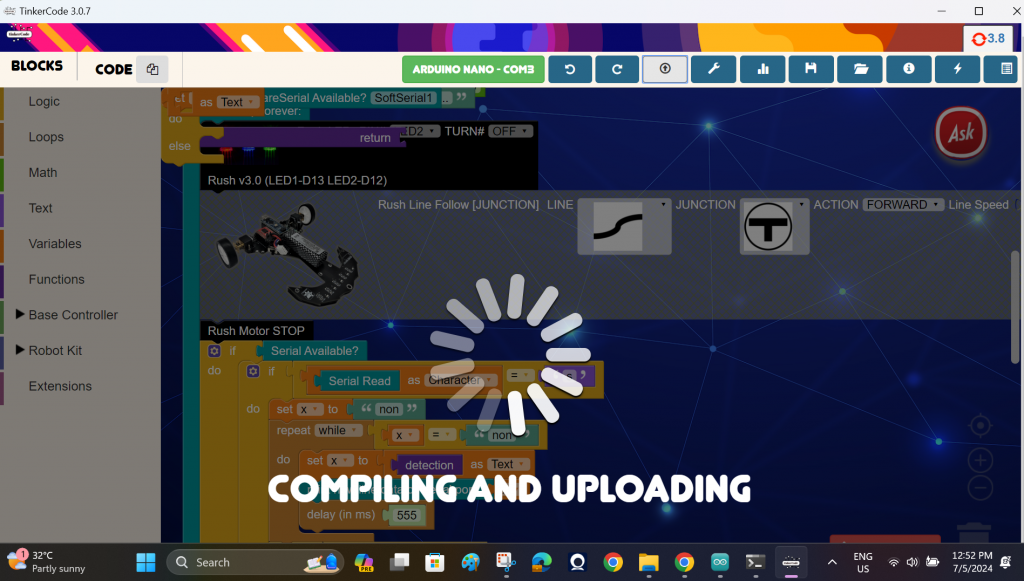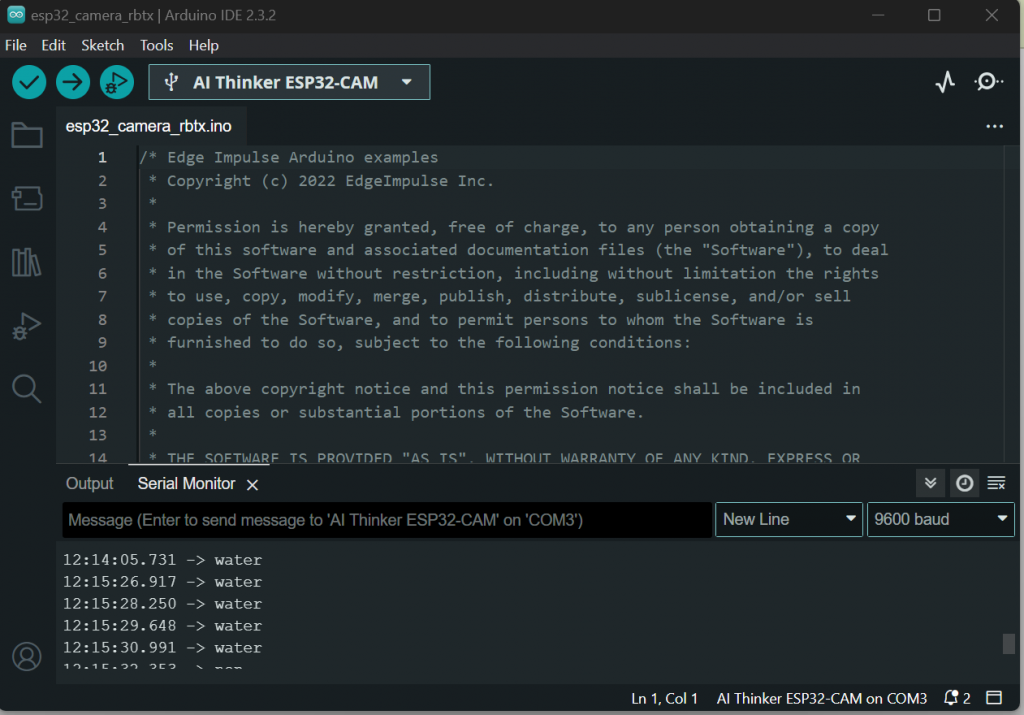I had the incredible opportunity to be in Petrosains KLCC in a a pre-workshop focusing on developing a learning module for an AI line tracer. Hosted by a team of experts (Dr Fauzan and Aein) in robotics and AI technology, the workshop deals with the innovative process of retrofitting an existing Arduino robot with a camera module to enable advanced image processing capabilities.
The centerpiece of the workshop was the integration of a camera module, specifically the ESP Cam, into the Arduino robot. This integration was facilitated through a serial connection, utilizing a soft serial approach to convert digital pins into serial inputs. Before attaching the ESP Cam to the Arduino, the camera module underwent initial coding to capture images using the AIthinker ESP camera module. These captured images were then fed into an AI image processing platform called Edge Impulse (https://edgeimpulse.com/) , where the magic truly began.
The task at hand was to train the system to detect specific images, namely images representing wind, water, and sun. This process, known as clustering, involved training the Edge Impulse platform with the collected images. Edge Impulse, as one of the available web AI platforms, utilizes sophisticated algorithms to process and classify images. Once the images were trained, Edge Impulse generated an Arduino library with AI image classification capabilities, enabling the Arduino robot to recognize and respond to the detected images.
The integration of the AI image processing module into the Arduino robot was a meticulous process. Due to the limited number of pins on the Arduino Nano, a soft serial approach was employed to establish communication between the ESP Cam and the Arduino. This involved coding two digital pins to serve as a transmit (TX) and receive (RX) interface for the serial connection.
Using a block programming approach known as Tinkercode, the Arduino robot was programmed to follow a line track while simultaneously activating the camera to “see” images. Additionally, the gripper mechanism on the robot was coded to release or block whenever the right image was detected, adding an extra layer of functionality to the system.
The workshop – master class – brought another perspective of robotics education, showcasing how AI image processing can be seamlessly integrated into Arduino-based systems. With the ability to detect and respond to visual stimuli, Arduino robots equipped with AI capabilities hold immense potential in various applications, from automated manufacturing to environmental monitoring. This serve as a perfect playground to nurture interest and skills in digital making skillsets =).
Nurul – May 7th, 2024
